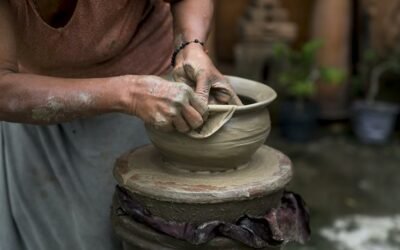Are you dealing with mold on your butcher block countertops? Don't worry, we've got you covered!
In this article, we'll guide you through the process of removing mold from your countertops.
You'll learn how to:
- Assess the extent of the mold
- Gather the necessary supplies
- Remove surface mold with a gentle cleaner
- Treat deep-set mold with a mold remover
- Seal and protect your countertops.
Say goodbye to that pesky mold and keep your kitchen clean and safe.
Key Takeaways
- Inspect the countertop for visible signs of mold growth
- Gather the necessary supplies including rubber gloves, face mask, bleach, spray bottle, scrub brush, and clean cloth
- Remove surface mold with a gentle cleaner like dish soap or vinegar
- Treat deep-set mold with a mold remover, following the instructions and thoroughly rinsing and drying the countertop afterward
- Seal and protect your butcher block countertops using mineral oil, beeswax, or tung oil, applying according to the manufacturer's instructions.
Assess the Extent of the Mold
Assess the mold's severity by inspecting the butcher block countertop for visible signs of mold growth. Start by examining the surface of the countertop closely. Look for any patches or spots that appear discolored, fuzzy, or have a musty odor. These are indicators of mold growth. Pay special attention to areas that are frequently exposed to moisture, such as near the sink or around the edges of the countertop.
Next, gently touch the surface of the countertop to check for any soft or spongy areas. Mold can penetrate deep into the wood, causing it to become weak and deteriorated. If you notice any soft spots, it's a clear sign that the mold has spread extensively and the countertop may need to be replaced.
Additionally, inspect the surrounding areas, such as the walls or cabinets, for any signs of mold. Mold can easily spread from the countertop to other surfaces, so it's essential to address the problem comprehensively.
Gather the Necessary Supplies
To begin removing mold from your butcher block countertops, start by gathering the necessary supplies. This will ensure that you have everything you need to effectively clean and restore your countertops.
Here are the supplies you'll need:
- Rubber gloves: Mold can be harmful to your health, so it's important to protect yourself by wearing rubber gloves during the cleaning process.
- Face mask: In addition to gloves, wearing a face mask will provide an extra layer of protection against breathing in any mold spores that may be released during the cleaning process.
- Bleach: A solution of bleach and water is an effective way to kill and remove mold from your countertops. Make sure to use a bleach that's specifically designed for mold removal.
- Spray bottle: A spray bottle will allow you to easily apply the bleach solution to the affected areas of your countertops.
- Scrub brush: A stiff-bristle scrub brush will help you to scrub away the mold and any stains that may have formed on your countertops.
- Clean cloth: After scrubbing the countertops, you'll need a clean cloth to wipe away any remaining mold or residue.
- Hot water: Hot water will be used to rinse the countertops after cleaning.
Remove Surface Mold With a Gentle Cleaner
- First, gather a gentle cleaner, such as dish soap or vinegar, and a soft sponge or cloth. These supplies will help you effectively remove surface mold from your butcher block countertops. It is important to choose a gentle cleaner to avoid damaging the wood.
- To remove surface mold, you can create a homemade cleaner using a mixture of warm water and dish soap or vinegar. Both dish soap and vinegar have properties that can help eliminate mold effectively. Alternatively, you can also purchase a commercial cleaner specifically designed for removing mold from wood surfaces.
- Once you have your gentle cleaner ready, dampen a soft sponge or cloth with the solution. Gently scrub the surface of the butcher block countertops, paying extra attention to the areas affected by mold. Be sure to use gentle, circular motions to avoid scratching the wood.
To give you a clear idea, here's a table summarizing the steps to remove surface mold from butcher block countertops:
| Step | Actions |
|---|---|
| 1 | Gather a gentle cleaner (dish soap or vinegar) and a soft sponge or cloth |
| 2 | Create a homemade cleaner or use a commercial cleaner |
| 3 | Dampen the sponge or cloth with the solution |
| 4 | Gently scrub the surface, focusing on mold-affected areas |
Removing surface mold from butcher block countertops requires a delicate approach to protect the wood. By following these steps and using a gentle cleaner, you can effectively eliminate mold and restore the cleanliness of your countertops.
Treat Deep-Set Mold With a Mold Remover
To treat deep-set mold on your butcher block countertops, use a mold remover specifically designed for wood surfaces. These specialized mold removers are formulated to penetrate the wood and eliminate the mold at its source.
Here are the steps to effectively treat deep-set mold on your butcher block countertops:
- Prepare the area: Clear the countertop of any items and ensure proper ventilation by opening windows or using fans.
- Apply the mold remover: Follow the manufacturer's instructions and apply the mold remover directly to the affected areas. Use a brush or sponge to evenly distribute the product.
- Allow the remover to sit: Let the mold remover sit on the surface for the recommended amount of time. This allows the product to penetrate the wood and break down the mold.
- Scrub the surface: After the recommended time has passed, use a scrub brush or sponge to scrub the surface, removing any remaining mold or residue.
- Rinse thoroughly: Rinse the countertop with clean water to remove any leftover mold remover and residue.
- Dry the countertop: Use a clean, dry cloth to thoroughly dry the countertop. Make sure there's no excess moisture left on the surface.
Seal and Protect Your Butcher Block Countertops
Now that you have successfully treated the deep-set mold on your butcher block countertops, it's time to move on to sealing and protecting them. Sealing your countertops is essential for preventing future mold growth and maintaining their durability and appearance. Here is a table outlining different sealants you can use for your butcher block countertops:
| Sealant Type | Features | Application |
|---|---|---|
| Mineral Oil | Food-safe, enhances natural wood color, easy to apply | Apply a generous amount with a clean cloth, let it soak for 20 minutes, wipe off excess |
| Beeswax | Food-safe, creates a protective barrier, adds a subtle shine | Melt the wax and apply a thin layer using a clean cloth, let it dry and buff for a smooth finish |
| Tung Oil | Water-resistant, durable, enhances grain patterns | Apply a thin layer using a clean cloth, let it dry for 24 hours, repeat for desired level of protection |
When applying sealant, ensure that your countertops are clean and dry. It's recommended to follow the manufacturer's instructions for each specific sealant, as application methods may vary. Remember to reapply the sealant periodically to maintain its effectiveness.
Conclusion
In conclusion, removing mold from butcher block countertops requires several steps.
First, you need to assess the extent of the mold. This will help determine the appropriate course of action and the supplies you'll need.
Next, gather the necessary supplies. This may include a gentle cleaner for surface mold or a mold remover for deep-set mold. Make sure you have everything you need before starting the removal process.
Once you have everything ready, use the appropriate cleaner to remove the mold from the countertops. If you're dealing with surface mold, a gentle cleaner should be sufficient. However, if the mold is deep-set, you may need to use a mold remover. Follow the instructions on the cleaner or mold remover for best results.
After removing the mold, it's important to seal and protect your countertops. This will help prevent future mold growth. There are various sealants available specifically for butcher block countertops. Choose one that is suitable for your countertop material and follow the application instructions.
By following these steps, you can effectively remove mold from your butcher block countertops and maintain their cleanliness and durability.






0 Comments